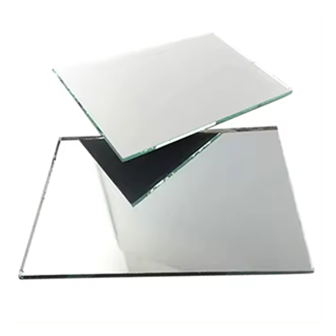Dec . 07, 2024 15:16 Back to list
Benefits and Features of Low-E Glass Windows for Energy Efficiency and Comfort
The Advantages of Low-E Glass Windows
In recent years, energy efficiency has become a significant consideration for homeowners and builders alike. One of the most impactful innovations in this area is the use of Low-Emissivity (Low-E) glass in windows. This technology not only enhances the comfort of living spaces but also contributes to environmental sustainability and long-term cost savings. In this article, we will delve into what Low-E glass is, how it works, and the benefits it offers.
Understanding Low-E Glass
Low-E glass is a type of energy-efficient window glass that has been treated with a thin, nearly invisible coating of metal or metallic oxide. This special coating helps to reflect infrared light, keeping heat inside during winter and reflecting heat away during summer. Unlike standard glass, Low-E glass is designed to maximize energy efficiency without compromising on visibility or aesthetics.
The Low-E coating reflects radiant heat while allowing visible light to pass through, which means that homeowners can enjoy natural sunlight without experiencing excessive heat or UV damage. This dual functionality is crucial for maintaining comfortable indoor temperatures year-round.
How Low-E Glass Works
The magic of Low-E glass lies in its unique structure. The coating is typically applied to one of the interior surfaces of insulated glass units (IGUs). This placement maximizes the performance of the glass against conduction, convection, and radiation.
When sunlight hits a window, it contains different types of energy, including visible light, ultraviolet (UV) light, and infrared (IR) light. Most traditional glass allows all of this energy to enter, which can result in uncomfortable heat gain. Low-E glass works by reflecting back a significant portion of the infrared light while still permitting visible light to come in. This results in a more consistent and comfortable indoor climate regardless of external weather conditions.
low e glass window

Benefits of Low-E Glass Windows
1. Energy Efficiency One of the most notable advantages of Low-E glass windows is their ability to significantly reduce heating and cooling costs. By minimizing the amount of heat that escapes in the winter and blocks heat from entering in the summer, homes equipped with Low-E glass can maintain optimal temperatures with less reliance on heating and cooling systems.
2. UV Protection Low-E windows also block a significant amount of harmful UV rays. This is particularly important for protecting furniture, artwork, and flooring from fading or damage caused by prolonged sun exposure. Homeowners can enjoy natural light without the harmful effects of UV radiation.
3. Comfort Enhancement With Low-E glass, homeowners can enjoy a more comfortable living environment. By reducing hot spots near windows and keeping indoor temperatures stable, these windows help to create a soothing home atmosphere where occupants can feel comfortable regardless of the season.
4. Environmentally Friendly Using Low-E glass can contribute to a reduced carbon footprint. Energy-efficient homes require less energy for heating and cooling, which means fewer greenhouse gas emissions from power plants. This aligns with a growing global emphasis on sustainability and responsible resource use.
5. Noise Reduction While not its primary function, Low-E glass can also help in reducing outside noise. The insulated properties of Low-E windows can limit the amount of sound entering a home, providing an added layer of comfort and tranquility.
Conclusion
Low-E glass windows are a smart choice for anyone looking to enhance energy efficiency, comfort, and sustainability in their home. With their ability to reflect heat while allowing natural light, these windows strike a perfect balance between functionality and aesthetics. As energy costs continue to rise and environmental awareness grows, investing in Low-E glass is more important than ever. Choosing Low-E windows not only benefits homeowners through reduced energy bills and increased comfort but also supports a greener planet for future generations.
-
Safety and Style with Premium Laminated Glass Solutions
NewsJun.24,2025
-
Reinvents Security with Premium Wired Glass
NewsJun.24,2025
-
Premium Float Glass Line for Modern Architecture
NewsJun.24,2025
-
Low Emissivity Glass for Energy-Efficient Architecture
NewsJun.24,2025
-
High-Performance Insulated Glass Solutions for Modern Architecture
NewsJun.24,2025
-
Elevates Interior Style with Premium Silver Mirror
NewsJun.24,2025
Related PRODUCTS














